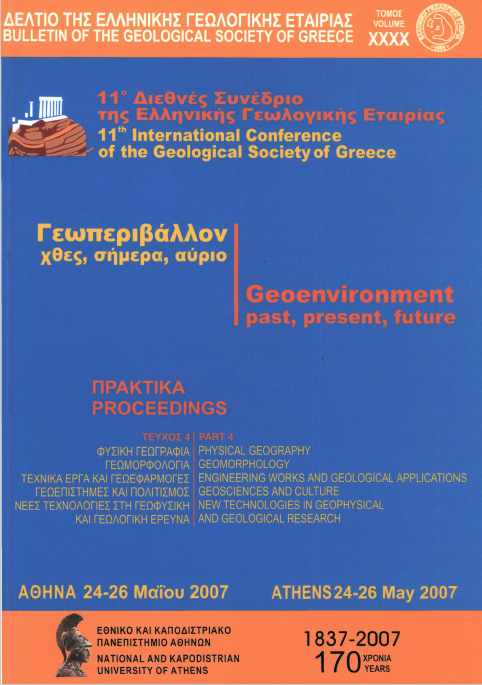Micropaleontology and biostratigraphy efficient tools in archaeological research. Raw material provenance in the upper Palaeolithic Kasthtsa cave, loannina region (Greece)

Abstract
The present paper discusses the contribution of Micropaleontology and Biostratigraphy to the archaeological research using as a case study the Upper Palaeolithic cave of Kastritsa in the Ioannina basin, north-west Greece. Thin section analysis applied to a selected number of stone tools from the site suggested that raw materials employed in their manufacture could originate from the Ioannina basin or even from outcrops in the proximity of the cave. This suggest that once Palaeolithic groups arrived at the cave, they practised low mobility which in turn suggests that a range of subsistence opportunities were available in the area allowing to its inhabitants extensive stays. This hypothesis is well supported by the archaeological record of the site. Micropaleontology and Biostratigraphy can be a useful method in the investigation of raw material provenance, especially when sedimentary rocks are studied, and it can provide significant insights into huntergatherer mobility strategies.
Article Details
- How to Cite
-
Zambetakis-Lekkas, A., & Elefanti, P. (2007). Micropaleontology and biostratigraphy efficient tools in archaeological research. Raw material provenance in the upper Palaeolithic Kasthtsa cave, loannina region (Greece). Bulletin of the Geological Society of Greece, 40(4), 1874–1879. https://doi.org/10.12681/bgsg.17180
- Section
- Geosciences and Culture

This work is licensed under a Creative Commons Attribution-NonCommercial 4.0 International License.
Authors who publish with this journal agree to the following terms:
Authors retain copyright and grant the journal right of first publication with the work simultaneously licensed under a Creative Commons Attribution Non-Commercial License that allows others to share the work with an acknowledgement of the work's authorship and initial publication in this journal.
Authors are able to enter into separate, additional contractual arrangements for the non-exclusive distribution of the journal's published version of the work (e.g. post it to an institutional repository or publish it in a book), with an acknowledgement of its initial publication in this journal. Authors are permitted and encouraged to post their work online (preferably in institutional repositories or on their website) prior to and during the submission process, as it can lead to productive exchanges, as well as earlier and greater citation of published work.





